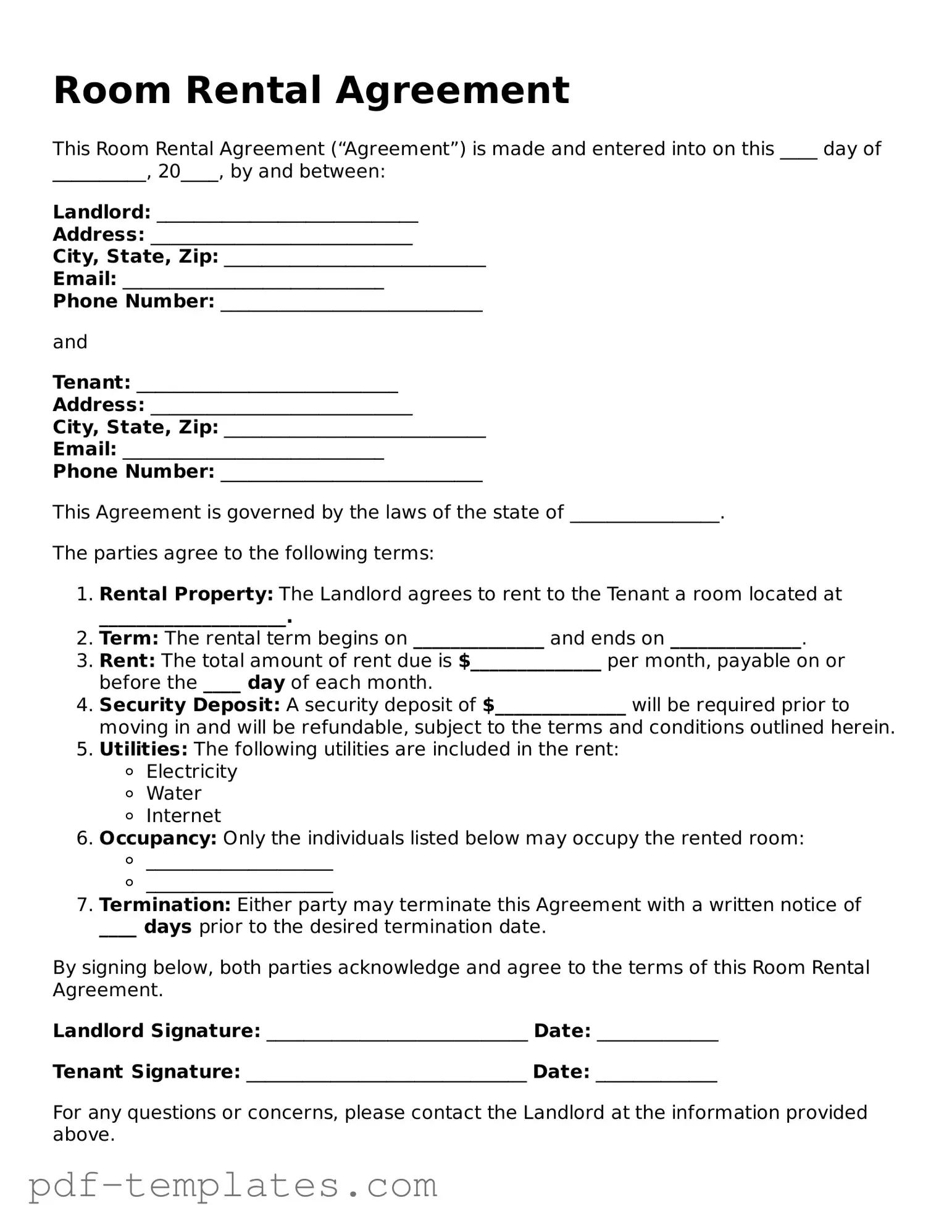The Lease Agreement is perhaps the most closely related document to a Room Rental Agreement. Both serve to outline the terms and conditions under which a tenant can occupy a property. A Lease Agreement typically covers a longer duration, often a year or more, while a Room Rental Agreement may be for a shorter period. Both documents detail the rental amount, payment schedule, and rules regarding the use of the property, ensuring that both parties understand their rights and responsibilities.
Understanding the various rental agreements is crucial for anyone navigating the rental market. Each type, from a Lease Agreement to a Vacation Rental Agreement, serves to define the relationship and expectations between parties. In California, for instance, residents should be particularly aware of the All California Forms related to earthquake insurance, as having proper coverage can be vital in a state prone to seismic activities.
The Sublease Agreement is another document that shares similarities with a Room Rental Agreement. In a sublease, the original tenant rents out a portion of their rented space to another individual. Like a Room Rental Agreement, the sublease outlines the terms of occupancy, including rent, duration, and rules. It is essential for both the original tenant and the subtenant to understand their obligations, as the original tenant remains responsible to the landlord.
A Roommate Agreement is also comparable to a Room Rental Agreement. This document is typically used when multiple individuals share a living space, detailing each person's responsibilities regarding rent, utilities, and shared spaces. While a Room Rental Agreement may focus more on the landlord-tenant relationship, a Roommate Agreement emphasizes the interpersonal dynamics and expectations among roommates, including cleaning schedules and guest policies.
A Security Deposit Agreement is frequently linked to a Room Rental Agreement. This document outlines the conditions under which a security deposit is collected, held, and returned. It specifies the amount, the purpose of the deposit, and any deductions that may be made for damages or unpaid rent. Both agreements work in tandem to protect the interests of the landlord while ensuring that tenants understand their financial obligations.
The Move-In Checklist is another document that complements a Room Rental Agreement. This checklist is completed at the beginning of a tenancy to document the condition of the rental space. It helps prevent disputes over damages at the end of the lease term. By recording the state of the property, both landlords and tenants can refer back to this document to clarify responsibilities regarding repairs and maintenance.
A Termination Notice is related to a Room Rental Agreement as it outlines the procedure for ending the tenancy. This document specifies the notice period required by either party and any conditions that must be met before vacating the premises. Understanding the termination process is crucial for both landlords and tenants to ensure a smooth transition and to avoid potential legal disputes.
The Pet Agreement is another important document for tenants with pets. This addendum to the Room Rental Agreement details the rules and restrictions regarding pet ownership within the rental property. It may include pet deposits, breed restrictions, and guidelines for pet behavior. This agreement ensures that both parties have a clear understanding of the expectations surrounding pets in the rental space.
The Maintenance Request Form is also relevant to a Room Rental Agreement. This document allows tenants to formally request repairs or maintenance from the landlord. It provides a clear record of the request and can help ensure that necessary repairs are addressed in a timely manner. Both landlords and tenants benefit from having a structured process for handling maintenance issues, fostering good communication and prompt action.
Finally, the Eviction Notice is a legal document that can be issued in conjunction with a Room Rental Agreement. This notice informs a tenant of the landlord's intention to terminate the tenancy due to violations of the rental agreement, such as non-payment of rent or breach of rules. Understanding the eviction process is vital for both landlords and tenants, as it outlines the legal steps that must be followed to resolve disputes and protect each party's rights.
